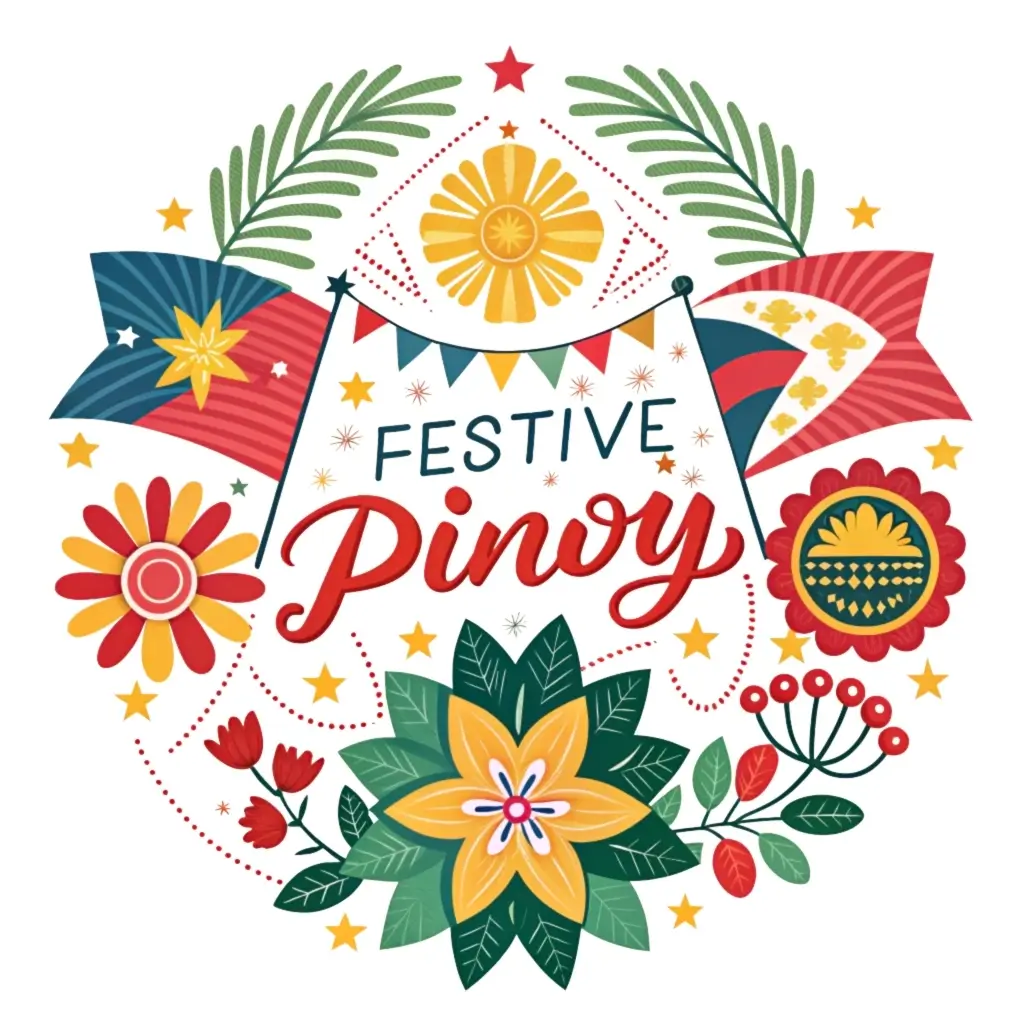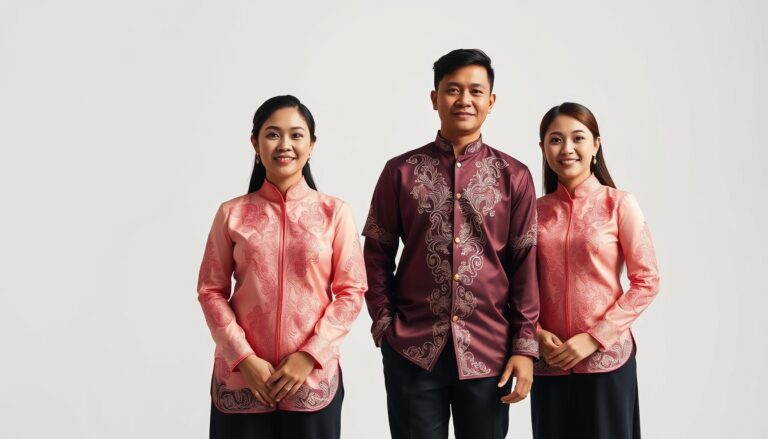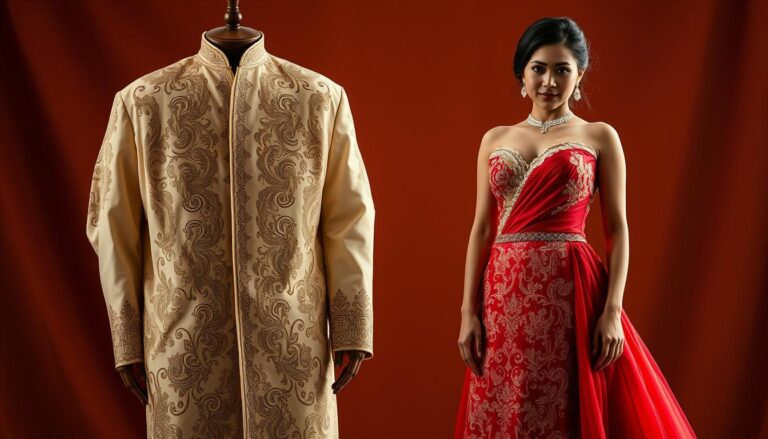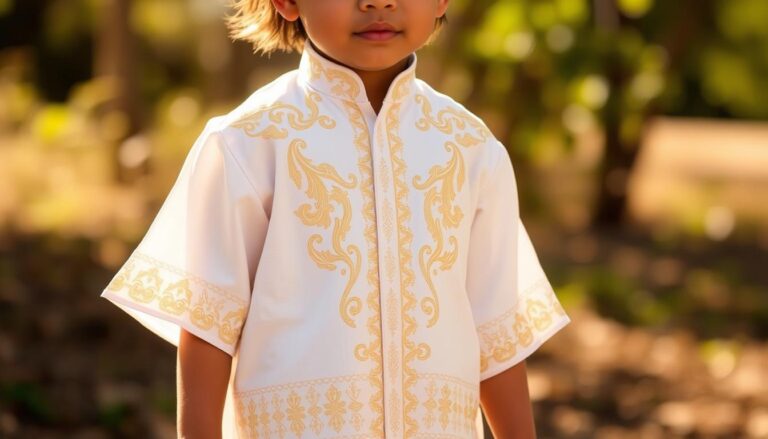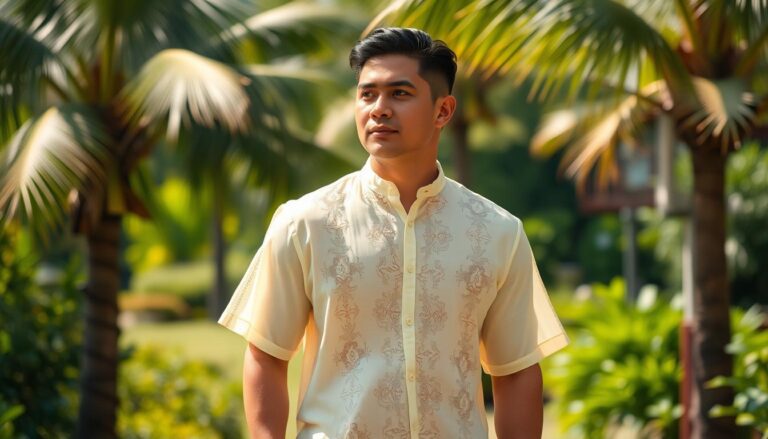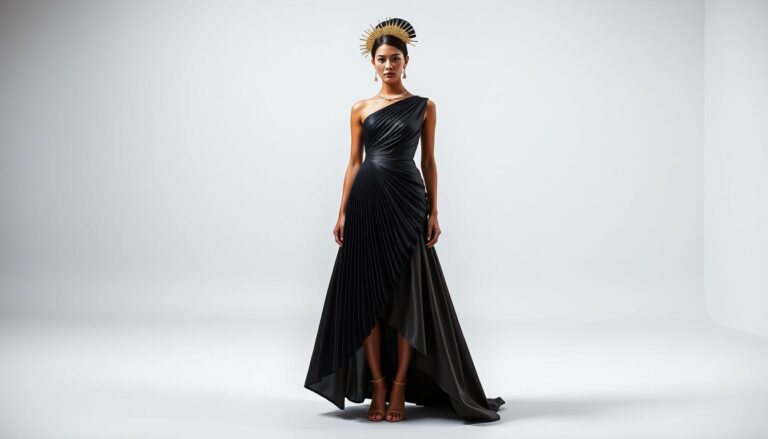Celebrities Championing Filipino Fashion Globally
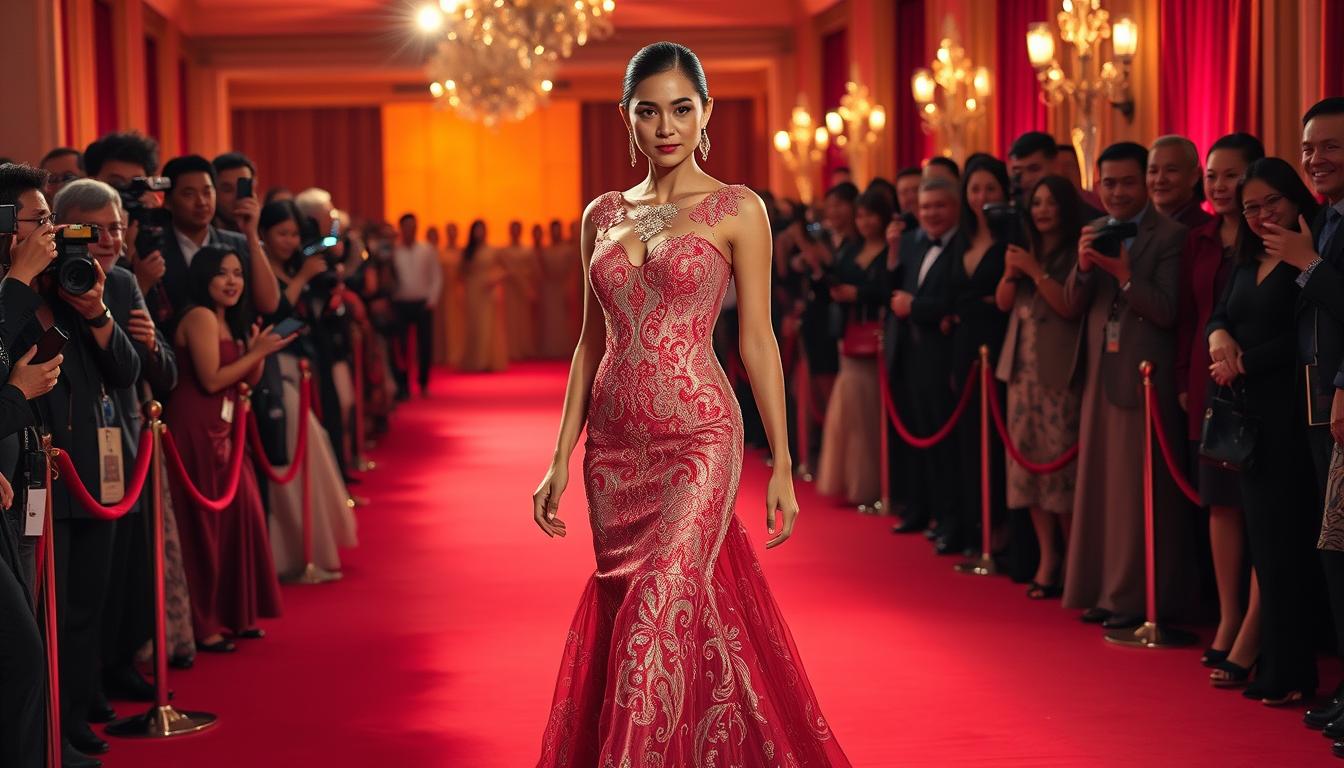
Hollywood’s biggest events now showcase a vibrant blend of heritage and innovation. At recent premieres like Barbie, stars have embraced bold designs rooted in cultural artistry. Ana Cruz Kayne stunned in a coconut-fiber terno top by Dennis Lustico, merging the iconic butterfly sleeve with contemporary flair. This trend reflects a growing appreciation for craftsmanship once confined to local runways.
From Bella Poarch’s intricately embroidered gowns to Vanessa Hudgens’ modernized terno dresses, traditional fabrics and techniques are gaining global attention. Designers like Rajo Laurel and Michael Cinco reimagine ancestral patterns for red-carpet moments, proving cultural pride pairs seamlessly with high fashion. Their work elevates handwoven textiles and intricate beadwork into luxury statements.
Events like the Asian American Awards and Cannes Film Festival now serve as platforms for these creations. Kris Aquino and Zoey Deutch have also championed pieces that honor weaving traditions while embracing sleek silhouettes. This movement isn’t just about clothing—it’s a celebration of identity through every stitch.
Key Takeaways
- Red carpet events highlight modern adaptations of traditional butterfly sleeves and terno designs
- Designers blend ancestral techniques with contemporary aesthetics for global audiences
- Stars like Ana Cruz Kayne and Vanessa Hudgens amplify cultural craftsmanship internationally
- Filipino-made fabrics and embroidery techniques gain recognition as luxury elements
- Major film festivals serve as key platforms for heritage-inspired fashion statements
Embracing Heritage: Filipino Fashion on the Global Stage
Traditional craftsmanship once confined to regional festivals now dazzles on international platforms. Designers fuse ancestral techniques with modern design, creating pieces that whisper history while shouting innovation.
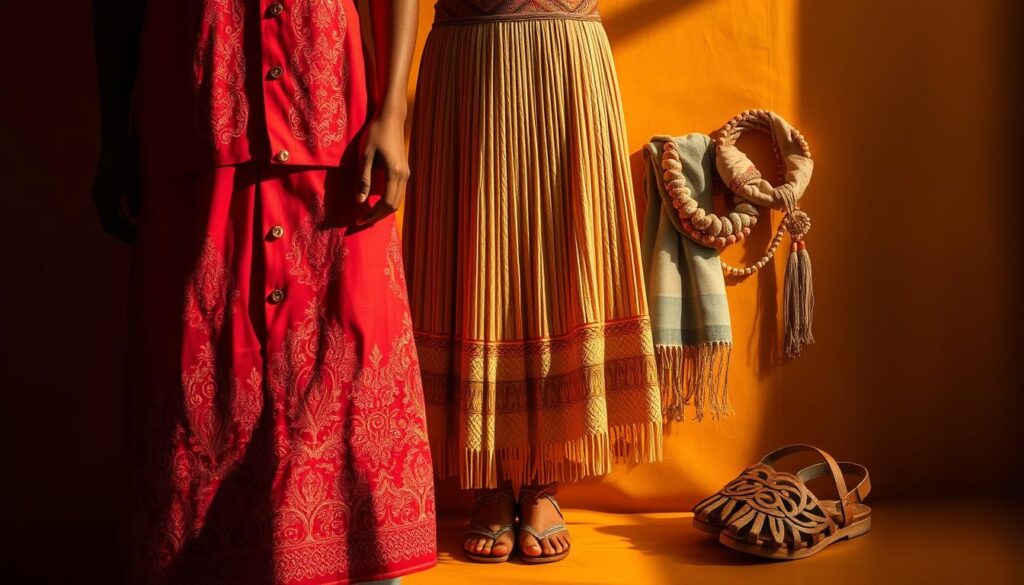
The Rise of Filipino Fashion in Hollywood
Michael Cinco’s crystal-embellished gowns walked Paris runways before gracing Cannes. His signature blend of European tailoring and Filipino beadwork redefined luxury. Rajo Laurel’s terno redesigns—streamlined yet ornate—now outfit A-list actors at film premieres.
Monique Lhuillier’s bridal collections showcase piña fabric, a delicate pineapple fiber woven for centuries. These creations prove cultural heritage isn’t nostalgic—it’s cutting-edge.
Global Recognition of Traditional Elements
Butterfly sleeves evolved from 19th-century silhouettes to red-carpet staples. Indigenous ikat patterns appear in New York’s fall fashion lines. Below shows how traditional elements transform modern wardrobes:
| Traditional Element | Modern Adaptation | Global Impact |
|---|---|---|
| Handwoven Terno | Metallic-thread embroidery | Featured in Vogue |
| Banig weaving | Structured handbags | Stocked in Milan boutiques |
| Barong tagalog | Gender-neutral jackets | Worn at Met Gala |
This shift isn’t about trends—it’s a dialogue between art and identity. As global tastemakers embrace these details, they amplify stories stitched into every thread.
Celebrities Championing Filipino Fashion Globally
Red carpets have become runways for storytelling through fabric. At the 2024 Barbie premieres, Ana Cruz Kayne turned heads with a beaded terno top featuring hand-cut coconut shells. This designer piece by Dennis Lustico reimagined the butterfly sleeve with metallic threads, blending ancestral techniques with Hollywood glamour.
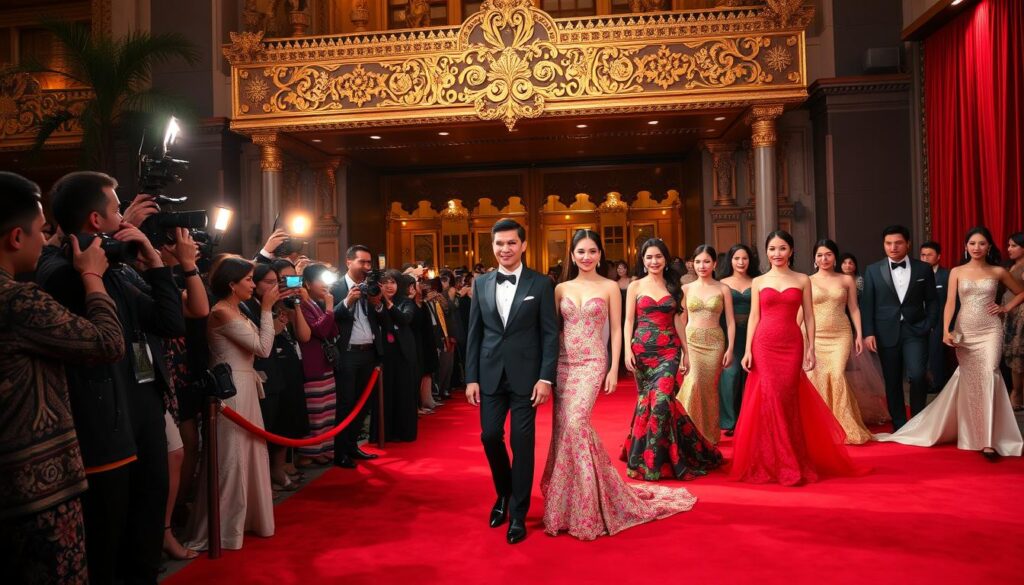
Iconic Red Carpet Moments
Bella Poarch’s seafoam green ensemble at the Asian American Awards showcased a crop top with modernized butterfly sleeves. Liza Soberano elevated Rafé Totengco’s terno design at the 88rising Gala, pairing it with minimalist tailoring. These looks prove heritage elements can anchor bold, contemporary style.
Celebrity Endorsements and Cultural Pride
Pia Wurtzbach-Jauncey’s Michael Cinco gown at Cannes sparked conversations about Filipino designers competing with European houses. However, Zoey Deutch’s Dolce&Gabbana dress—inspired by traditional embroidery—faced mixed reactions. Critics praised its beauty but questioned cultural authenticity.
These moments do more than showcase fashion. They transform red carpets into platforms for heritage celebration. As stars choose these pieces, they amplify a brand of pride stitched into every seam, proving cultural narratives belong on the world’s most visible stages.
Impact Beyond the Red Carpet: Expanding Filipino Influence
Global runways now serve as cultural bridges for design rooted in tradition. Rajo Laurel’s London Fashion Week collection featured capiz-shell embroidery on structured blazers, merging ancestral techniques with European tailoring. This fusion demonstrates how indigenous art forms transcend geographical boundaries.
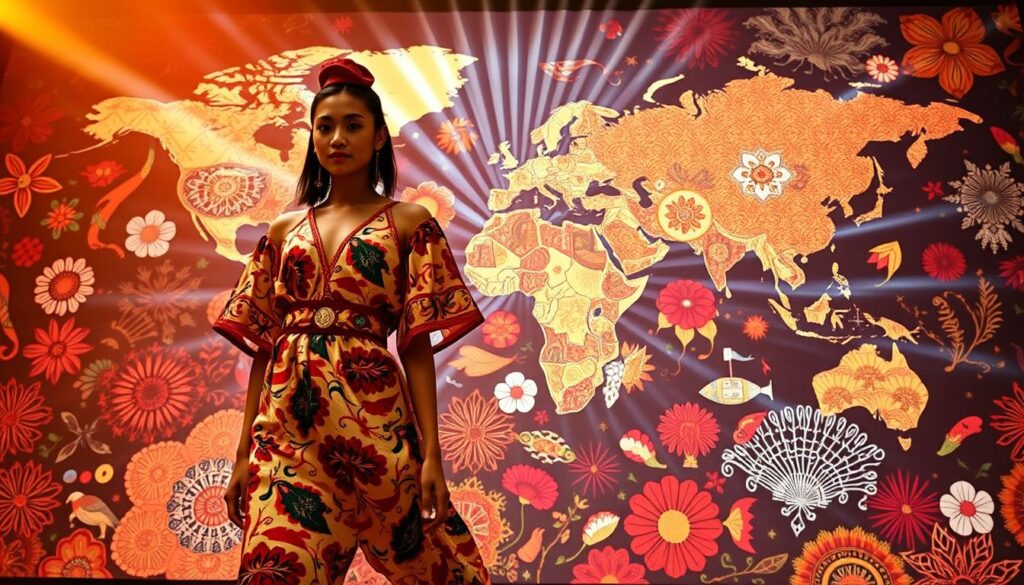
Crossover Success in International Markets
Michael Cinco’s crystal-encrusted gowns dominated Dubai’s Fashion Forward shows, while emerging labels like Herman & Co. debuted Mindanao-inspired patterns at New York’s market weeks. Three key factors drive this expansion:
- Sustainable practices using pineapple and abaca fibers attract eco-conscious buyers
- Luxury retailers now stock banig-woven accessories adapted for urban style
- Collaborations with international brands introduce piña fabric to new audiences
Heart Evangelista’s Vogue feature wearing Cheetah Rivera pieces sparked interest in Manila’s collections. Meanwhile, Mich Dulce’s avant-garde hats gained cult followings in Paris concept stores. These achievements prove Filipino creativity isn’t a trend—it’s reshaping global fashion narratives through culture and innovation.
As designers secure partnerships from Milan to Tokyo, they carry forward a legacy of pride. Each stitch whispers stories of heritage while boldly claiming space in the world’s most competitive markets.
Influential Designers and Fashion Innovators
Behind every stitch lies a story of tradition meeting modern design. Visionaries like Michael Cinco transform ancestral patterns into wearable art, dressing royalty and Hollywood icons alike. His crystal-embellished gowns for Beyoncé and Jennifer Lopez merge European drama with Filipino beadwork techniques.
Visionaries Shaping Filipino Style
Monique Lhuillier reimagines centuries-old piña fabric in bridal collections stocked at Bergdorf Goodman. Rajo Laurel’s streamlined terno designs—worn by Asia’s elite—preserve handwoven textiles while embracing minimalist cuts. These creators prove cultural heritage fuels innovation rather than limiting it.
Signature Designs and Global Client Lists
JC Buendia’s abel cotton suits outfit diplomats and CEOs, showcasing indigenous weaving’s versatility. Oliver Tolentino dresses Oscar nominees in geometric barong gowns, his atelier attracting clients from Paris to Tokyo. Their success stems from balancing authenticity with universal appeal.
Emerging talents like Gabbie Sarenas follow this blueprint. Her Vancouver Fashion Week showcase featured ramit fabric embroidered with folklore motifs, now collected by actresss and museum curators. As these innovators gain traction, they redefine global perceptions of Philippine style while nurturing local craftsmanship.
Modern Trends: From Traditional to Streetwear
City streets are becoming unexpected runways for cultural storytelling. Designers now weave ancestral patterns into hoodies, bombers, and sneakers, creating looks that honor heritage while embracing urban edge.
Reimagining Tradition in Contemporary Fashion
Rhuigi Villaseñor’s Rhude label merges barong fabric with streetwear silhouettes. His designer hoodies feature delicate jusi weaves typically used in formal wear, paired with distressed denim. This approach transforms ceremonial textiles into everyday style statements.
Collaborations amplify this fusion. 13DE MARZO’s NASA-themed jackets integrate metallic banig-inspired threading, while their space teddy bear motifs add playful nostalgia. These pieces bridge traditional craftsmanship with futuristic themes.
From Red Carpets to Urban Runways
Versatility drives demand. A single jacket might transition from gallery openings to skate parks, featuring capiz-shell buttons or digitalized sablay embroidery. Brands like Tier spotlight this adaptability, using piña-silk blends for reversible parkas.
Celebrity influence accelerates the movement. Charli D’Amelio’s 13DE MARZO tracksuit sparked a 300% search spike for Filipino streetwear. Meanwhile, Lilly Singh’s concert outfits blend graphic tees with hand-beaded necklines, proving cultural fashion thrives in casual spaces.
Future collections may incorporate augmented reality tags explaining garment origins. As heritage meets holographic prints, streetwear becomes a living archive—one that walks city blocks worldwide.
Conclusion
Cultural threads woven into modern attire are rewriting fashion’s global script. Visionaries like Rajo Laurel and Michael Cinco prove ancestral techniques can shape tomorrow’s trends, blending handwoven textiles with sleek silhouettes. Events like Vogue Philippines’ anniversary highlight this fusion, where piña fabrics meet avant-garde cuts.
Stars amplify this movement through bold choices—whether on red carpets or concert stages. Their selections transform traditional embroidery and butterfly sleeves into universal style statements. Each piece carries stories of craftsmanship, turning garments into cultural conversations.
This evolution celebrates more than aesthetics—it’s a testament to enduring pride in heritage. Designers reimagine banig weaving and barong details for urban wardrobes, proving tradition thrives through innovation.
Explore collections showcased at events like the MEGA Fashion Awards to witness this dynamic blend. As global runways increasingly feature these creations, they signal a future where cultural narratives define luxury. Engage with this vibrant dialogue—every stitch invites you to discover style rooted in legacy, yet limitless in possibility.
